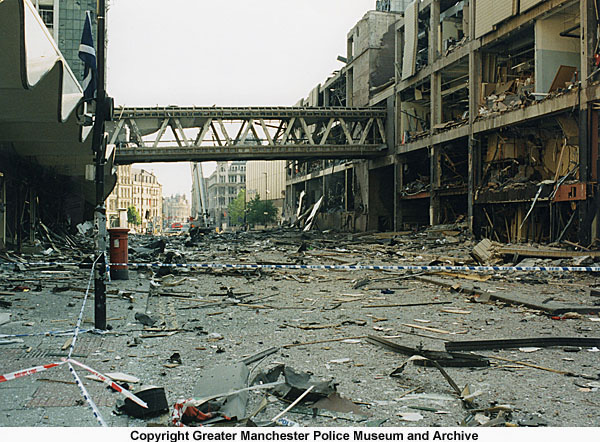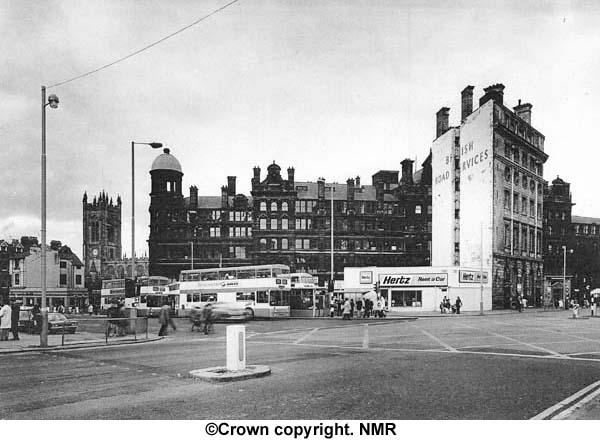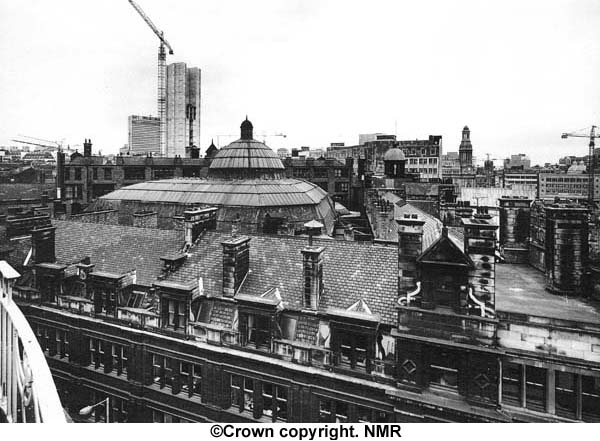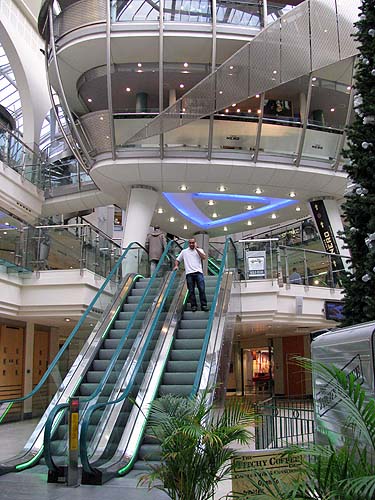|
Exchange Square
 Exchange Square was
created in the aftermath of the IRA bomb that
devastated Manchester's city centre.
 So significant was the damage that several buildings had to be demolished while others were restored and transformed. As the aerial photograph below, from 1953, shows two busy roads ran through what is now a pedestrianized square. Cannon Street and Hanging Ditch connected Corporation Street and Victoria Street.     A ditch once ran through
this area south of the cathedral and draining in to the
River Irwell. It was called Hanging Ditch.
To commemorate the fact a water feature running through
stones was made part of the square created after the
bomb. It can be seen between the trees in the
background.
 This collection of
buildings, dating back to the 17th Century, have lived
an interesting life. Originally they were located in a
street of medieval building known as The Shambles. When
much of the area was extensively damaged during the WWII
blitz, the Shambles survived.
 When the area around them was redeveloped in the 1970s, the Old Wellington Inn (in the background) and Sinclair's Oyster Bar (right) were jacked up and secured on a steel and concrete foundation. They became part of square behind the old Marks and Spencer store. In 1996, unlike the modern buildings around them, they survived the IRA bombing. However, it was decided to move both building to make way for the redevelopment of the Marks and Spencer site. This time the Old Wellington was completely disassembled and the two buildings were moved to this new location next to the Triangle. Originally the two buildings were adjacent but in their new home they have been oriented in an L-shaped configuration. A modern but sympathetic extension has been added to the Wellington. It can be glimpsed in the corner where the two buildings meet.  For a number of
years a wheel has been placed in the square during
the Christmas period but this has now become a
permanent feature.
The first Corn
Exchange built on this site in 1837 was designed by
Richard Lane, who by 1830 was regarded as Manchester's
leading architect. However, his building was
demolished and replaced in 1897 by the current
building. It was in fact constructed in two sections
by different architects in 1897 and 1903. The building
has a glass dome which lit the central trading floor.
 In the 1960s various
wholesalers of food products had their premises at
street level and below along the streets that
surrounded the building. A photograph from an earlier
time shows a branch of Parrs Bank to the right of the
entrance shown above and Winn's Cafe next to it. The
actual trading floor fell into disuse after World War
II and, when I visited it in the 1980s, that space was
being used as an indoor market with a number of
dealers selling jewelery, clothes, books and records.
 When the IRA bomb went off the building was severely affected. Restoration involved the replacement of 800 window frames and 1700 square metres of glass to repair the dome. The £8 million reconstruction created an upmarket retail centre, called The Triangle, containing 55 retail units. On the outside wall is the BBC TV screen. |
